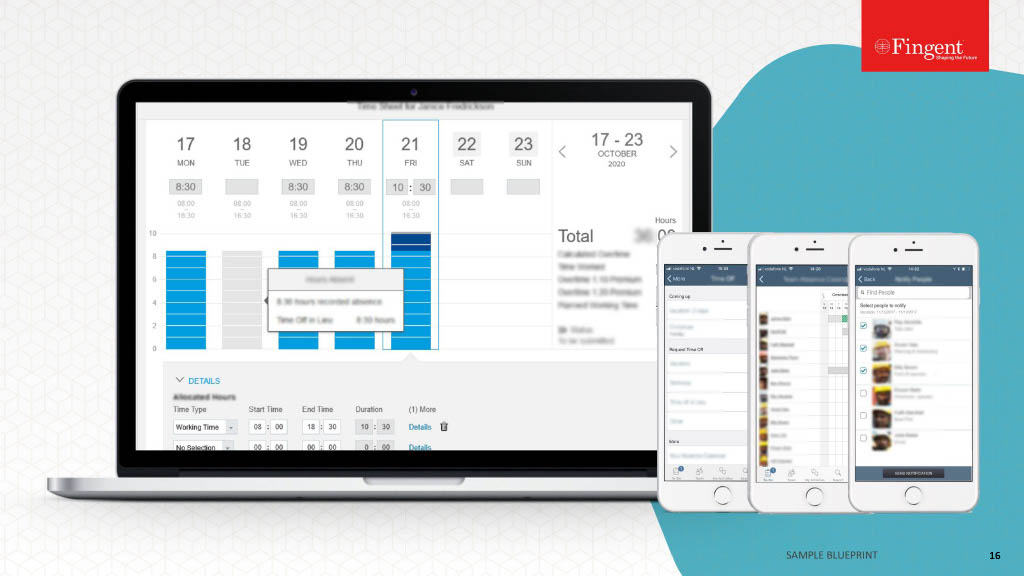Top 5 Dos and Don’ts Of Custom Software Development
Custom Software Development: What To Do and Not To Do
The “build versus buys” debate in software development seems to have tipped in favor of custom software development as more and more businesses recognize the implications of customization on their growth. With rising competition, it has become imperative for each business to differentiate itself from its competitors in every way and custom software development rests at the core of this differentiation.
That being said, software development has seen its fair share of fails even when it is labeled custom. This makes it extremely important that your project is carefully planned out and well-executed. With many years of experience as custom software developers, we have put together a list of do’s and don’ts to help make your custom software development project a success. This blog will discuss 5 of them. Before that, let’s drive home the reasons why custom software is imperative for businesses.
Related Reading: Check out the top reasons why custom software development is important to your business.
Custom Software: The Backbone of Business
Custom software fulfills specific business requirements, which are unique to specific businesses. This helps businesses gain a competitive advantage and leverage the software to build processes that define an effective USP. While this in itself is an uppercut to reckon with, let’s have a look at a few more points that will help deliver the knockout punch in favor of custom software development.
- Solution Matches Need: Since custom applications are developed with your specifications in mind, the final solution will effectively address your needs. Therefore, it simplifies the entire business process saving time and effort.
- Minimal training: Tailored features make it very easy to use and require minimal training to get started on the software. When the software is optimized for each department, the interface requirements will be customized to match the needs and skill level of your employees.
- Works with your Business Model: As the custom solution is built around your business model, it will have the user roles and interoperability functions that your departments need to function effectively.
- Unique Code and Enhanced Protection: By developing a unique code that is specific to your software, custom software minimizes external threats and unauthorized access.
- Long Term Cost Benefits: Custom software helps automate several manual processes and thus saves on manpower. It also eliminates the licensing costs that accrue with off-the-shelf solutions.
- Increased Scalability: Custom software developers work on a long-term basis and can easily scale the software according to the growth of the business.
The Dos and Don’ts
There are several key steps involved in creating custom software. It involves a combination of foresight and creativity. Here are a few time-tested Do’s and Don’ts to help avoid the usual pitfalls that have been known to crop up in this process.
1. Pre-Planning
Don’t: Do not Ignore Preparation
Clients who are looking for a quick solution for their app requirements generally hire developers who agree to unreasonable deadlines. Under such circumstances, the planning and research step is often ignored and that has a ripple effect on the following stages. Not acquiring the necessary materials from the beginning can leave the company unprepared. This can lead to additional changes and the timeline for your project will have to be pushed back, not to mention escalating the costs involved.
Do: Prepare, Prepare!
The planning stage is crucial because it allows the developer to do a thorough SWOT of the idea. At this stage, some have found it helpful to include sketches or outlines and functionality options of the application. It works best to gather all the necessary information at the earliest stage to ensure your project stays on budget. This allows the project to stay on schedule.
2. Ensure its Customization
Don’t: Create for Yourself
You must have heard of the False Consensus Effect, where one thinks that others also think the same way he/she thinks. This can happen while designing the app. It is easy to put our ideas into a design and expect others to like it just because we liked it. That works contrary to the thought of customization.
Do: Keep it User-Centered
Consider carefully what the general user would appreciate. Developers must stick to the requirements drawn up at the planning stage while continuing to give their inputs on the initial ideas. Take pride in creating a user-centered app.
3. Technical Feasibility and Prototype
Don’t: Allow Misunderstandings
Misunderstanding the business’ requirements, miscommunication about the platform and the format can lead to major issues in creating the app.
Do: Keep Lines of Communication Open
Actively communicate with the team about the technical requirements and provide a timeline for building the prototype. It is difficult to visualize what an app would look like and how it will function unless there is a prototype. Ensure that you communicate frequently with management and obtain feedback at every stage of the development.
4. Design and Development
Don’t: Ignore Key Requirements
Design and development are the stages that take the most amount of time. Ignoring key requirements might lead developers to spend valuable time coding for a bad end-product. Functionality demands might be misread which leads to a loss of time and missed deadlines.
Do: Understand the Needs
It is vital to understand the UI/UX needs of the business to gain clarity and minimize work. The app will go through a lot of different changes. When changes are required, ensure that the development team and management are on the same page. Once decisions are made, stick to them.
5. QA Testing
Don’t: Be Negligent
The testing team should not be negligent towards post-development issues such as bugs, form functionalities, and security licenses. This could negatively impact the launch of the application. It could either be delayed or the app might face a post-launch backlash. Ensure that the app is not launched until all aspects have been tested and are up to the standards required.
Do: A thorough QA Test
App testing is a tedious job, but it is an important final stage. Compatibility, interface, security, and performance are some of the factors that should go through a rigorous check. Remember, after this whatever happens with the app will be in full public view.
Achieve Efficiency and Growth with Custom Software Development
Leading companies save time and costs in the long run when they customize their software according to their business model. Whether it’s creating accounting software or an HR solution or a customer-facing application, custom software allows you to choose the features you need for your business and employees. If you want to find business flexibility and growth, custom software is the right answer. It meets the needs of the company while allowing the business to grow without being limited by on-the-shelf software. To find how custom software development can do wonders to your business, call our experts today!
Stay up to date on what's new

Recommended Posts

15 May 2024 Financial Services B2B
Custom Payment Processing Solution: A Game Changer For Your Business
How can a custom payment processing solution change your business? The benefits are many: streamlined payment processes, safe transactions, easy fraud detection, and better customer experience. However, you might wonder……

10 Feb 2024
Why Are Leading Businesses Prioritizing Application Modernization
“In Today’s era of volatility, there is no other way but to re-invent. The only sustainable advantage you can have over others is agility, that’s it. Because nothing else is……

20 Dec 2023 B2B
Driving Smart and Sustainable Agriculture with Customized Technology!
As the world grapples with the challenges of climate change, soil degradation, and resource scarcity, agricultural organizations find themselves at a critical juncture. The urgency for adopting sustainable farming practices,……

08 Sep 2023 Education Healthcare
Types of Application Software: A Detailed Guide for 2024
Types of Application Software: Guide for 2024 Application software offers a plethora of options tailored to meet diverse needs and objectives. Choosing the right application software can transform operations and……
Featured Blogs
Stay up to date on
what's new























































